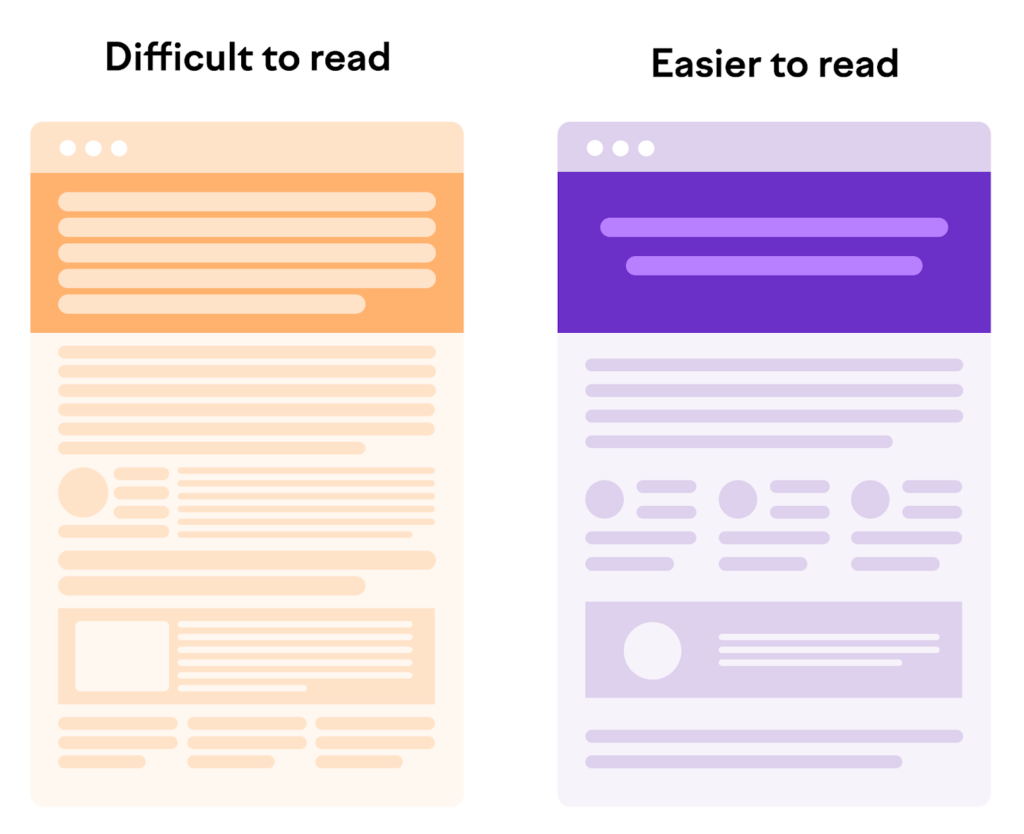How to Make Content Marketing Work For Your Business
Content marketing is a strategic approach to creating and distributing valuable, relevant, and consistent content to attract and retain a clearly defined audience — and, ultimately, to drive profitable customer action.
Sounds great so far, right? But what does it actually take to make content marketing work for your business? Let’s break it down.
Understand the Basics of Content Marketing
Content marketing is a strategic marketing approach focused on creating and distributing valuable, relevant, and consistent content to attract and retain a clearly-defined audience — and, ultimately, to drive profitable customer action.
Content marketing has been around for centuries. The term “content marketing” was first used in the late 1800s by John Deere in its publication The Furrow. In 1938, George Gallup coined the phrase “customer-oriented selling” to describe his company’s focus on understanding customers’ needs and desires before creating products to sell them. And in 1961, David Ogilvy published Confessions of an Advertising Man, which outlined many of the principles that are still used in content marketing today.
So what exactly is content marketing? Content marketing is creating and sharing valuable online material (such as videos, blogs, and social media posts) with the goal of attracting new customers or retaining existing ones. It’s an ongoing process that requires planning, creation, distribution, and measurement.
Why is Content Marketing Important
In a world where consumers are bombarded with up to 10,000 brand messages per day, content marketing helps your business stand out from the noise. By providing potential customers with valuable information that answers their questions and solves their problems, you can establish yourself as an expert in your industry—and earn their trust (and business).
Content marketing also allows you to build relationships with your target audience by engaging them on a regular basis. And when done right, it can be an extremely effective way to drive leads and sales for your business.
A few key statistics:
Companies that blog receive 97% more links to their website (HubSpot)
B2B companies that use blogs generate 67% more leads than those who don’t (Demand Metric)
85% of B2B marketers say lead generation will be their most important content goal this year (Curata)
Content marketing is an essential part of any effective marketing strategy—and it’s only going to become more important in the years to come.
Develop a Content Marketing Strategy
Before you can create content that resonates with your audience, you need to first understand who your target audience is. Consider factors such as age, gender, location, interests, and even pain points. Once you have a good understanding of who you’re targeting, you can begin to create content that speaks directly to them.
Create Quality Content
Before you start writing any content, it’s important to brainstorm ideas and come up with a plan. To do this, you’ll need to understand your target audience and what they’re interested in. Once you have a good understanding of your audience, you can start coming up with ideas for content that will appeal to them.
There are a few ways to brainstorm content ideas:
- Look at your competitors’ content. See what topics they’re writing about and try to come up with something similar that’s unique to your brand.
- Use keyword research tools like Google AdWords Keyword Planner or Moz Keyword Explorer to find popular keywords that people are searching for. Then, create content around those keywords.
- Check out social media sites like Twitter and Facebook to see what people are talking about. You can use hashtags to find relevant conversations, or look at trending topics to see what’s hot right now.
- Use Google Trends to see what topics are rising in popularity so you can get ahead of the curve and write about them before everyone else does.
- Keep an eye on PR news sites and blogs in your industry so you can quickly write about breaking news stories or hot topics that people are talking about.
Write Engaging Content
Once you have some ideas for content, it’s time to start writing! But it’s not enough just to write – your content needs to be engaging if you want people to read it and share it with others.
Here are some tips for writing engaging content:
- Write headlines that make people want to click. Use strong keywords and actionable verbs to create headlines that are both SEO-friendly and interesting.
- Make your opening sentence count. Start with a bang to grab attention from the get-go.
- Use short paragraphs and easy-to-read sentences. No one wants to read huge blocks of text, so make your content easy to skim by using short paragraphs and simple language.
- Use images, infographics, and videos. People are more likely to engage with content that’s visually appealing, so add images, infographics, and videos whenever possible.
- Add social sharing buttons. Make it easy for people to share your content by adding social sharing buttons to each piece of content you publish.

Promote Your Content
Search Engine Optimization (SEO) is the practice of optimizing your website and content to rank higher in search engine results pages (SERPs). This is important because it can help you reach your target audience more effectively and improve the overall visibility of your brand.
There are a number of different SEO practices that you can use to promote your content, including:
- Conduct keyword research to identify relevant keywords and phrases that your target audience is searching for.
- Optimize your website for these keywords and phrases by including them in your title tags, meta descriptions, header tags, and body copy.
- Create quality backlinks to your website and content from high-authority websites to improve your link popularity and SERP ranking.
- Use social media to share your content with a wider audience and build relationships with influencers who can help promote your brand.
Utilize Paid Advertising
In addition to organic SEO practices, you can also use paid advertising to promote your content and reach a larger audience more quickly. Paid advertising allows you to place ads on search engines, social media platforms, and other websites where potential customers are likely to see them.
When using paid advertising, it’s important to:
- Target your ads specifically to the demographics of your target audience;
- Test different ad copy and visuals to see what performs best;
- Set a budget for how much you’re willing to spend on each campaign;
- Monitor your results regularly so that you can make adjustments as needed.
Leverage Social Media
Social Media is another effective way that you can promote your content and reach a larger audience. When using social media for content promotion, it’s important to:
- Share each piece of new content multiple times on each platform;
- Use hashtags, @mentions, and other strategies to get more eyes on each post;
- Engage with other users regularly so that you can build relationships and grow your following;
- Take advantage of features like live video, stories, etc., which can help you stand out from the competition.
Connect with Influencers
An influencer is someone with a large following on social media or another online platform who can help promote your brand and content to a wider audience. When connecting with influencers, it’s important to:
- Identify influencers who are relevant to your target audience and niche;
- Reach out to them and build a relationship before asking for anything in return;
- Offer them something of value in exchange for their help (e.g., free products, exclusive content, etc.).
Track, Analyze, and Improve
In order to make sure that your content marketing efforts are paying off, you need to track key metrics to improve conversions (CRO). This will help you see what is working and what needs to be improved on your pages. Some important metrics to track include:
- Website traffic
- Engagement (shares, comments, likes)
- Leads generated
- Sales generated
- Bounce Rate
- Contact Form abandonment
If you need help, check out the following Gig, I will do a conversion rate optimization audit for your Website, Landing Page, E-Commerce.
Analyze Your Content
Once you have collected data on your content marketing efforts, it is time to analyze it. Look at which pieces of content are performing well and why. Also, take a look at what isn’t working and try to determine the reason why. This analysis will help you fine-tune your strategy moving forward.
Make Changes to Improve
Based on your analysis, make changes to your content marketing strategy. This might involve changing the type of content you create, the channels you use to promote it, or the frequency with which you publish new content. By constantly making improvements, you can ensure that your content marketing efforts are as effective as possible.
Conclusion
If you want to make content marketing work for your business, you need to understand the basics, develop a strategy, create quality content, and promote it effectively. You also need to track your progress and continually make improvements. By following these steps, you can ensure that your content marketing efforts are successful.
FAQ – Frequently Asked Questions
What are content marketing examples?
Content marketing is the process of creating and sharing valuable, relevant, and consistent content to attract and retain a clearly defined audience. Here are some examples of content marketing:
1. Blogging:
Writing informative and engaging blog posts that provide value to the audience.
2. Social media:
Creating and sharing content on social media platforms to engage with the audience and build a following.
3. Infographics:
Creating visually appealing graphics that present complex information in a simple and easy-to-understand format.
4. Ebooks:
Creating in-depth guides that provide valuable information to the audience.
5. Videos:
Creating informative and engaging videos that provide value to the audience. FlexClip is a great tool for creating professional-quality videos easily and efficiently, making video marketing accessible to everyone.
6. Webinars:
Hosting webinars on topics that are relevant to the audience and providing valuable information.
7. Podcasts:
Hosting podcasts on topics that are relevant to the audience and providing valuable information.
8. Case studies:
Sharing success stories of how your product or service has helped your customers achieve their goals.
9. Whitepapers:
Creating comprehensive reports that provide valuable information on a specific topic.
10. Email newsletters:
Sending regular emails to subscribers that provide them with valuable information and updates about your business.
What is content marketing in digital marketing?
Content marketing is an essential component of digital marketing that involves creating and sharing valuable, relevant, and consistent content to attract and retain a clearly defined audience. The goal of content marketing is to build trust with potential customers by providing them with useful information that addresses their pain points and needs.
In digital marketing, content marketing is used to attract and engage audiences across various online platforms, including websites, blogs, social media, email, and video channels. By creating high-quality content that resonates with their target audience, businesses can increase their brand awareness, drive website traffic, generate leads, and ultimately, increase conversions and revenue.
The success of content marketing in digital marketing depends on creating content that is informative, engaging, and tailored to the needs of the target audience. Additionally, businesses must consistently produce and distribute content to maintain their audience’s attention and interest. By implementing an effective content marketing strategy, businesses can establish themselves as thought leaders in their industry and build a loyal customer base.
How to use content marketing to grow your business?
Content marketing can be a powerful tool for growing your business. Here are some steps to take to use content marketing effectively to grow your business:
1. Define your target audience:
Identify your ideal customer and create content that addresses their pain points, needs, and interests.
2. Develop a content strategy:
Develop a plan for creating and distributing content across various channels to reach your target audience.
3. Create high-quality content:
Create content that is informative, engaging, and valuable to your target audience.
4. Use SEO:
Optimize your content for search engines to increase visibility and drive traffic to your website.
5. Promote your content:
Use social media, email, and other channels to promote your content and reach a wider audience.
6. Measure and analyze results:
Use analytics tools to track the performance of your content and adjust your strategy as needed.
7. Build relationships with your audience:
Engage with your audience through social media, email, and other channels to build trust and establish your brand as a thought leader in your industry.
By following these steps, you can use content marketing to attract and retain customers, increase brand awareness, and ultimately, grow your business. It takes time and effort to build a successful content marketing strategy, but with consistency and a focus on providing value to your target audience, you can achieve great results.
What are business content examples?
Business content refers to any type of content that is created with the primary purpose of promoting a business or its products/services. Here are some examples of business content:
1. Product/Service Descriptions:
Writing compelling descriptions of your products or services that highlight their features and benefits.
2. Case Studies:
Sharing success stories of how your products or services have helped your customers achieve their goals.
3. Customer Testimonials:
Showcasing feedback from satisfied customers who have used your products or services.
4. Whitepapers:
Creating comprehensive reports that provide valuable information on a specific topic related to your business.
5. Blog Posts:
Writing informative and engaging blog posts that address topics relevant to your target audience.
6. Infographics:
Creating visually appealing graphics that present complex information in a simple and easy-to-understand format.
7. Videos:
Creating informative and engaging videos that provide value to your target audience.
8. Email Marketing:
Sending regular emails to subscribers that provide them with valuable information and updates about your business.
9. Webinars:
Hosting webinars on topics that are relevant to your target audience and providing valuable information.
10. Social Media Posts:
Creating and sharing content on social media platforms to engage with your audience and promote your business.
#grow your business









